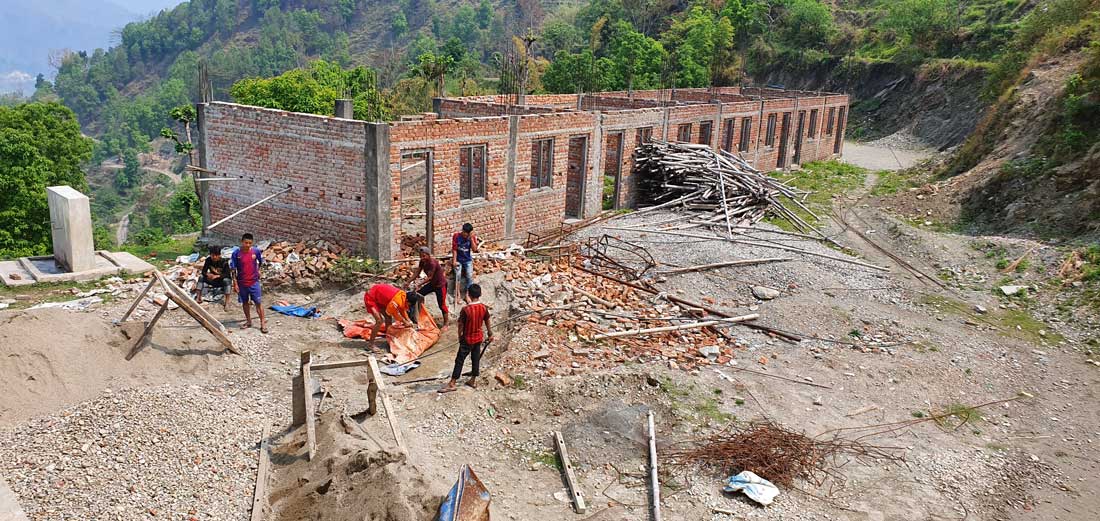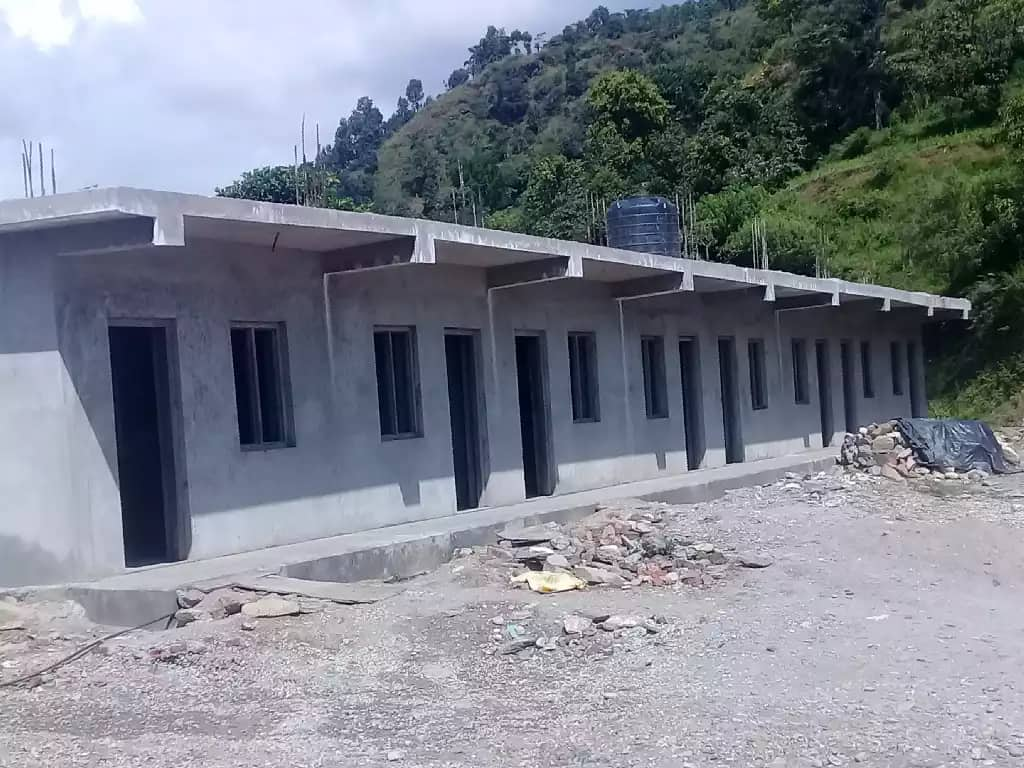Rebuilding a Gorkha School
Description
We were the primary sponsor of the construction of one of two buildings that were erected at the Chandra Kala School. The school was completely destroyed in the 2015 Nepal earthquake.
Project details
- Location : Shree Chandra Kala Lower Secondary School, Tamalabot - 9, Arukharka, Gorkha District (GPS: 28.091111, 84.673597).
- Population : 250 (grade 1 to 8 + pre-primary)
- Date : Completed in September 2019
- Project : Construction of a four room earthquake resistant 6 x 22 metre building.
- Category : Infrastructure,
The construction of a permanent school building at the Shree Chandra Kala School in the Gorkha District was an initiative that was born from our disaster aid work following the 2015 Nepal earthquake. (view the Chandra Kala School Earthquake Aid Project entry.
We are the principle sponsor in the construction of a four room earthquake resistant 6 x 22 metre building made. The building, constructed of brick and reinforced concrete beams and concrete roof, is being used as classrooms, computer lab and library for the school. The building also has the capacity for a second story to be added in the future if required.
In 2016, we were able to secure permission from the Gorkha District Education Office (DEO) to help construct the building. The building followed a government-approved earthquake-resistant design and the DEO agreed to monitor the project to ensure that it followed government guidelines and audit the project on completion.
The reconstruction was started in 2017 but was put on hold while another building funded by the Japanese Aid Agency JICA was completed. The building we helped fund was completed in September 2019.
At the time of our disaster aid program, we wanted to help the school with metal trusses for temporary classrooms similar to the ones we installed in the other Gorkha District schools, but there was no space available at the time to install temporary classrooms before the monsoon season. The existing temporary structures could not be moved either. They were built on two small terraced patches of land perched on a hill overlooking the remains of the school. The narrow pathway in front of the classrooms was less than two metres wide with a steep drop over the edge. It serviced 250 children rushing between classes.
We returned to the Tamalabot community in September 2015 to film a story about the difficulty the school faced in providing a quality education for its children. The completed film, EARTH-Q, gives voice to the concerns of teachers and parents and highlights the struggles children face learning in the makeshift school. Some of those struggles were summed up by the Chair of the School Committee during an interview when she said the children “have to go up to school on rocky and hilly tracks that are difficult to walk. While they are studying and it rains, they can’t hear properly. When it gets sunny the tin roof gets hot. After it rains the floor is flooded and muddy, it’s a disaster! When it’s sunny, the floor is dusty!”
We are grateful that we were able to return to the school to complete this project. Much of the funding was raised from the screening of Earth-Q, with contribution to the construction also made by the local government. We are also grateful to La Trobe University’s Nepalese Students Association for their very generous donation and to Rotary Melbourne for providing a top-up to help complete the concrete roof.


